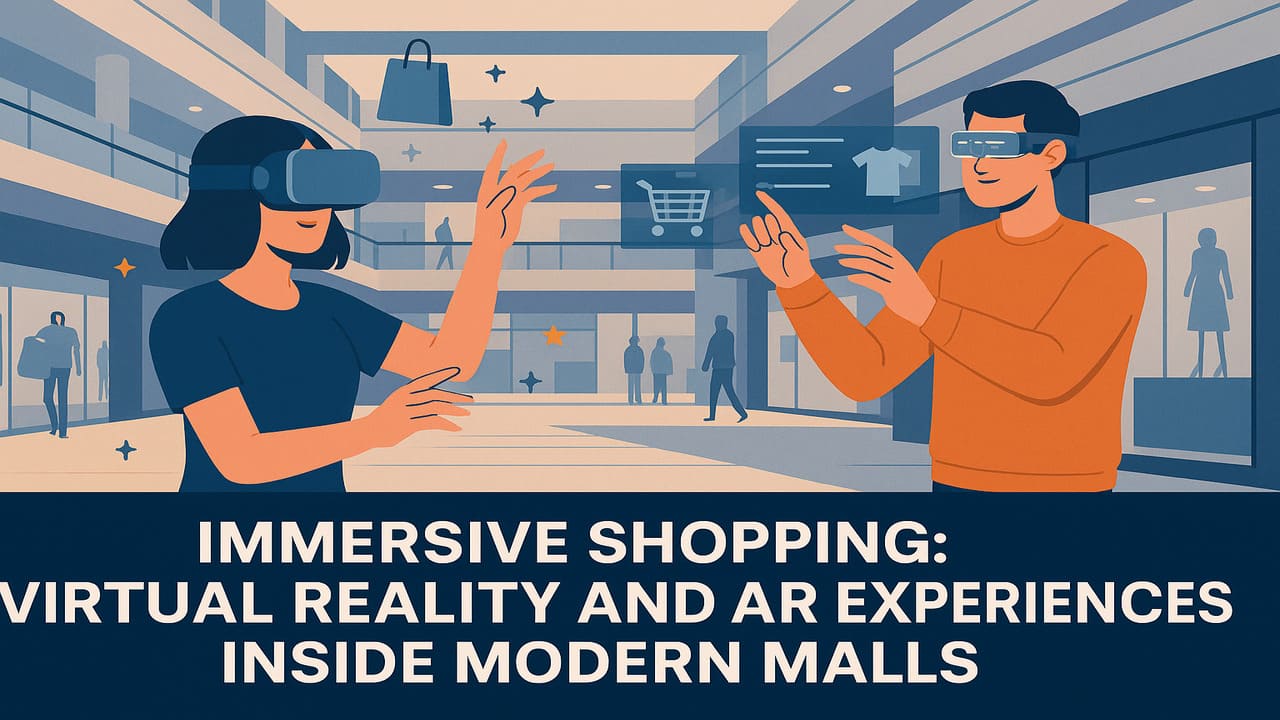
The Berkshire Mall – Shopping malls have long been more than just places to buy goods they are social spaces, cultural hubs, and entertainment centers. However, in the age of e-commerce, malls are under pressure to reinvent themselves. Virtual reality (VR) and augmented reality (AR) are emerging as powerful tools to bridge the gap between physical and digital Immersive Shopping. These technologies are not only revitalizing malls but also creating immersive experiences that online stores cannot replicate.
The integration of VR and AR allows malls to shift from transactional spaces into destinations of engagement. Customers are no longer just browsing shelves but entering interactive environments that blend imagination with reality. This transformation signals a new era in retail where technology enriches both convenience and entertainment.
Virtual reality offers shoppers the chance to step into entirely new environments without leaving the mall. For instance, VR headsets can transport customers into virtual showrooms where they can walk through a digital replica of a fashion boutique or a furniture store. They can visualize outfits in different settings or see how a sofa would look inside a model living room.
Beyond product exploration, VR also extends to entertainment within malls. VR gaming zones, immersive movie experiences, and interactive exhibitions attract visitors who may not be primarily there for shopping. This added layer of leisure transforms malls into multi-purpose destinations, keeping foot traffic high even as online shopping grows.
Also Read : 5 Surprising Facts You Didn’t Know About The Berkshire Mall
While VR creates entirely digital environments, AR enhances the real world with digital overlays. Shoppers in modern malls are already encountering AR through smartphone apps and interactive screens. For example, AR mirrors allow customers to “try on” clothes, accessories, or makeup virtually, eliminating the need for lengthy dressing room lines.
AR also empowers customers to access information instantly. By scanning a product with a phone, shoppers can view reviews, pricing comparisons, or even 3D visualizations of how items might fit into their daily lives. This seamless blend of digital content into physical spaces gives customers greater confidence in their choices while enriching the shopping journey.
The adoption of VR and AR in malls offers several benefits for both retailers and consumers:
Retailers gain stronger connections with customers, while shoppers enjoy a more dynamic and interactive environment than ever before.
Adopting VR and AR comes with challenges. The cost of developing and maintaining immersive technologies can be high, especially for smaller retailers. There are also technical considerations, such as ensuring compatibility with customers’ devices and maintaining secure data usage. Moreover, success depends on how well these technologies are integrated into the overall mall experience, rather than treated as novelties.
However, the opportunities are vast. Immersive shopping can help malls attract younger, tech-savvy audiences who seek experiences beyond simple purchasing. It can also open doors for partnerships between malls, technology providers, and global brands, creating a retail ecosystem that thrives on innovation.
Read More : Solar Powered Power Banks: Eco-Friendly Charging for On the Go
Instead of viewing e-commerce as competition, immersive technologies allow malls to complement online platforms. Imagine a customer browsing products online at home and then stepping into a mall to experience them in VR or AR before making a purchase. This hybrid model unites the efficiency of online shopping with the sensory depth of in-person experiences.
The future of malls may no longer be defined by rows of stores alone but by their ability to provide memorable experiences. By embracing VR and AR, malls are reshaping themselves as destinations where culture, technology, and retail intersect in ways that satisfy the evolving expectations of modern consumers.